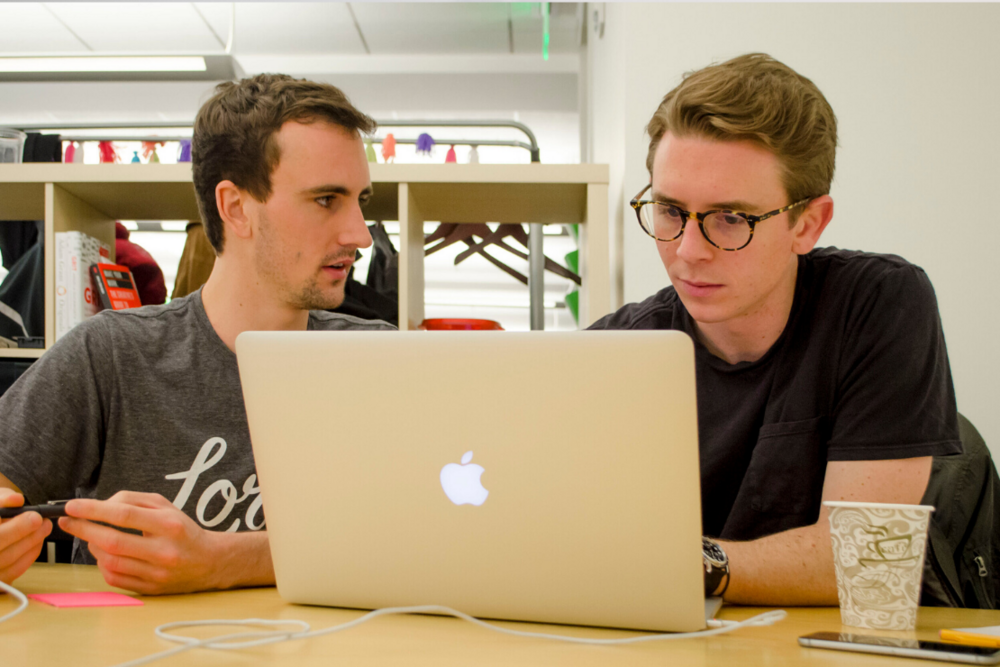5 Tips for Non-Tech Founders Hiring Technical Staff
Jan 08, 2020

6-min read
Paul Bilodeau, CEO and founder of Filtered AI (Techstars Anywhere 2018) is a three-time founder and a seasoned technical recruiter. He created Filtered.ai, an AI technical screening tool for hiring managers, after experiencing the inefficiencies and bias associated with traditional resume-based hiring. He shared with us his top 5 tips for non-technical founders making their first technical hires.
How do you vet and hire someone to do a job that you yourself don’t know how to do? Perhaps you know your organization could benefit from having a Data Scientist to help optimize the UX of your new website or help evolve your dynamic pricing strategy, but with such a broad set of data-science specialities, how do you go about finding a candidate that has skills in the areas your organization needs? Or, perhaps you aren’t even sure what technical competencies are necessary for the hires you need to make and are unsure what to look for on resumes. How do you vet them? How do you ensure that the skills they list on their resume are, in fact, things that they are experts in?
When it comes to growing your team, every hire is critical, especially in the early stages because each new employee fundamentally shapes the company processes and culture. Technical hiring is one area of business where “trusting your gut” just might not be enough.
Here are my top five tips for non-technical founders when they are making a technical hire:
01. Start with some reflection - short-term tech decisions have long-term impacts
When you’re hiring a data scientist or software engineer (especially the ones who will be choosing the tech stack and building a foundation for the technologies that drive your website, apps, products), it’s important to understand the tech stack your candidates are adept at working in, and which ones they prefer. Your role is to understand which tech stack is right for your business. You can figure this out by asking a few questions, like: “Is talent available in your area to support scaling a team working on this stack?” “Will that talent be available at a reasonable salary?” “Is this a well-liked tech stack or something that other hires will not want to work with?”
The first question you should answer is whether you are building the technical foundation for a house you want to live in forever, or for the trailer you plan to live in temporarily. In other words, do you want a solution to get things off the ground that you plan to adapt over time, or do you want to create a legacy solution knowing that it will need a lot of future refinements? Deciding if this tech stack is your “starter home” or your “forever home” will help inform decisions both in terms of the tech and the talent you need to support it. If you aren’t sure where to start, reach out to your technical mentors or online communities for support.
02. Look at the resume with a fine-tooth comb - ways to spot a fake resume
Just as companies can utilize keywords in their website copy to aim for the best page placement results in Google, candidates can pack their resume with keywords to ensure that their resume passes the inspection of an Applicant Tracking System (ATS) Screening Tool. Some ATS and hiring tools batch review resumes and look for the presence of certain keywords to determine whether or not they will make it to the desk of a hiring manager for further review. The trouble is, fake or exaggerated resumes (you know, the ones that say they are proficient in every technology they’ve ever seen) are often artificially packed with keywords.
Here are some ways to test that a technical resume is real:
The technologies listed serve as supporting points to the story being told in the bullets on the resume (less than 20 technologies are cited) and the resume is a page or (maximum) two in length.
The responsibilities noted on the resume are supported by an outline of specific projects, initiatives and business impacts.
The resume makes the candidate appear human, noting hobbies and extracurricular interests alongside experience and skills.
There is consistency in their resume and across their social channels (like LinkedIn) and their employment at all prior companies can be verified easily online.
03. Prepare for the interview - know what you need to hear
In advance of the interview, instead of just compiling a list of questions to ask the candidate, make bullets for each question on what you do/don’t want to hear for the candidate to “pass” that answer. This method helps you give the candidate a score for each of their responses. Generally when hiring, you’ll do a batch of interviews in a short period of time. This method also helps you look back on the context for specific conversations. For example, if your question is, “What is your preferred tech stack? In what circumstances would you not choose this stack?” You should know that you want to hear an objective list in their answer to warrant a “passing grade.”
04. Avoid the hiccups - three non-negotiables in your first tech hires
Keep this list handy as you start to interview, because if the candidate can’t check these three skill boxes, they have to go to the “no” pile to help avoid big hiccups - you’ll thank me later:
Early-stage companies need players, not coaches. So, if you find that a VP of Engineering candidate can’t, or won’t, start out in the coding trenches - that’s a hard no. Your first technical hires should always be able and willing to code. In 2-3 years, if your business is a success, then you can bring on advisors to coach, but not at this stage.
You are looking for the most bang for your buck as you grow. This means not only taking the requirements, and prioritizing projects after weighing tradeoffs, but also avoiding the creation of technical debt which can be just as costly (if not more) in the long run as monetary debt. This means you need to make early hires who both understand and buy-in to your long term vision for the company. This will help you hire candidates who are willing to build the right way, not just the fast way.
Even though you won’t know which of your products are scalable for the first 6-12 months, look for candidates who have prior experience building a product from scratch. You must have developers on your team who can transform an idea into something tangible. For developers, building something from scratch is one of the best professional growth exercises there is.
05. Leave the guesswork out of hiring - use trusted technologies to guide hiring decisions
Why bother rolling a dice on someone when you can test them on their performance right up front? That’s what really matters. Sometimes you’ll find that candidates with poorly-written or underwhelming resumes are actually great hires. Why? Because resumes don't accurately demonstrate skills.
Nowadays, technical recruiters are turning to take-home tests, data challenges, and developer events to build a shortlist of high-performing candidates before peeking at a resume. As a seasoned technical recruiter myself, I experienced the inefficiencies and bias associated with traditional resume-based hiring firsthand and set out to fix a broken and outdated system. Filtered AI was built to screen, test, and identify top candidates through skills-based assessments - skills first, resume last. Using new technology techniques and software, like Filtered AI, will reduce the time-to-fill and drastically improve the quality of your hires.
Hiring is one of the most difficult parts of company building. You won’t always get it right, even in the midst of the best laid plans, but I hope that following these steps will give you the confidence that you are doing everything you can to avoid any of the common pitfalls.
About the Author

Paul Bilodeau
Paul Bilodeau is the CEO of Filtered AI.
